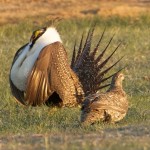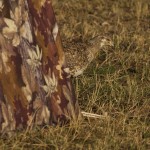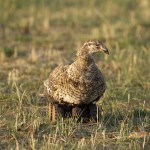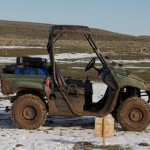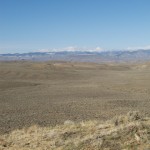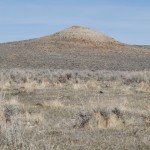One downside of an extended field season is missing many of the great visiting speakers that come through UC Davis. This week, the animal behavior graduate group welcomes Bernd Heinrich, a brilliant scientist and prolific author. I’ve read a couple of Bernd’s books on ravens, including Raven in Winter and Mind of the Raven, and was sad to have missed hearing more about his life and research.
However, this week I did get to meet another biologist that I have admired for a long time- Joe Hutto. Joe conducted an imprinting study of wild turkeys that I read early in my graduate career. I mentioned the book and movie adaptation in an earlier post. I recently learned that he lives in Lander, and was excited to meet up with him this spring.
As part of their month-long series of films for Earth Day, the Lander Public Library showed “My Life as a Turkey” on Thursday. After the showing, Joe got up and talked a little about the production of the film, and answered questions from the audience. I got to speak with him a little bit before and after the presentation. Joe was just as warm and thoughtful in person as he comes across in the books and movies. What a treat to finally get to meet him! We didn’t get to talk turkey very much, but I’ll be heading over to his place on Monday for a visit.
I also talked to a few people there about our sage-grouse work. The organizers of the film series were interested in having “What Females Want” (the PBS Nature show featuring our research) for next April.

